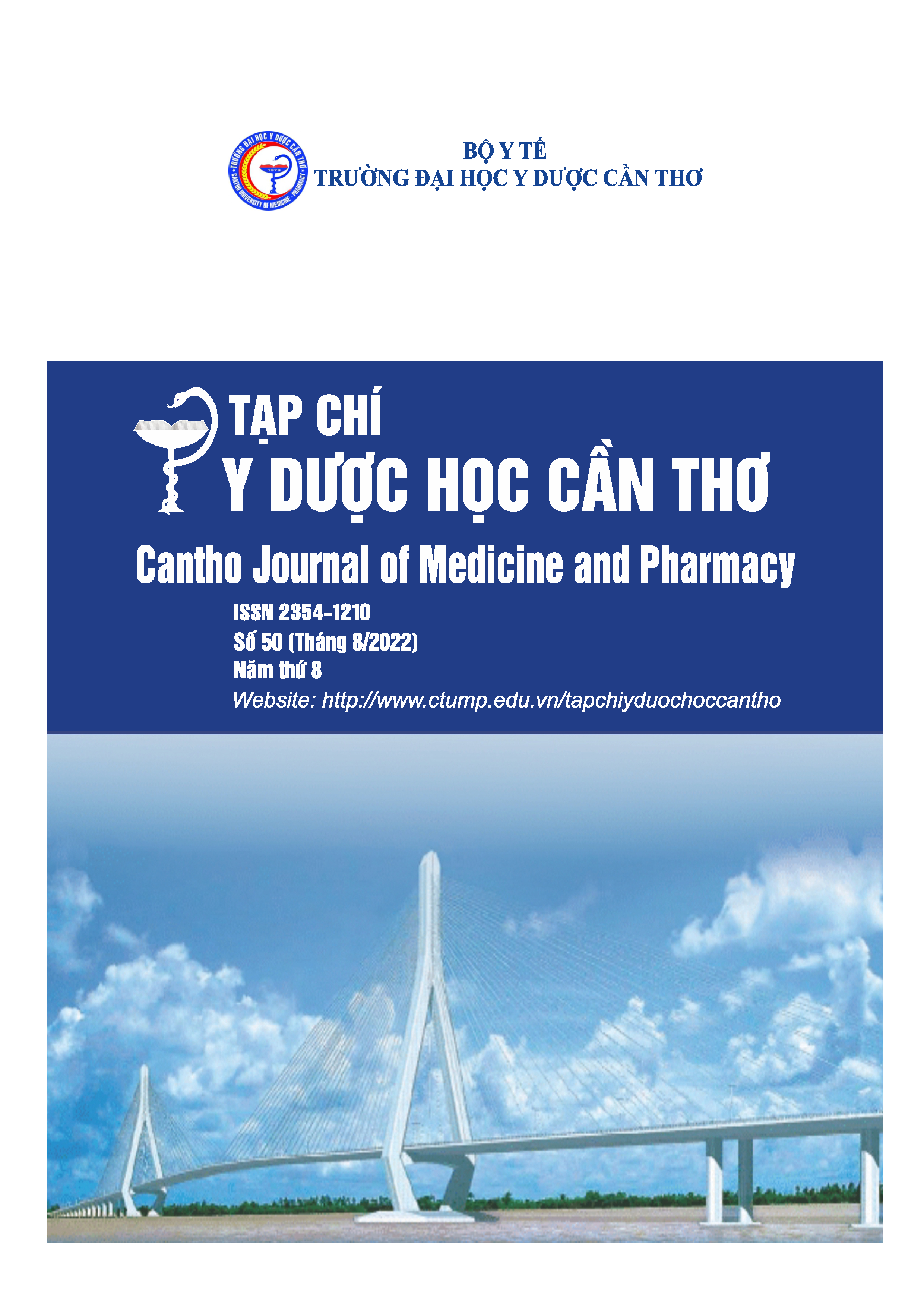HAND HYGIENE COMPLIANCE AMONG NURSING STUDENTS IN CAN THO UNIVERSITY OF MEDICINE AND PHARMACY
Main Article Content
Abstract
Background: Hand hygiene compliance is a cheap and effective solution for increasing caring results and decreasing 30 to 50% of hospital acquired infection. Therebefore, hand hygience compliance of nursing students is so important which helps to ensure safety and improve the quality of care for patients. Objectives: To identify the compliance with hand hygiene among nursing students in Can Tho University of medicine and pharmacy. Material and method: A cross-sectional study was conducted among 104 bachelor nursing students, which included junior and senior. Researchers assessed participant’s hand hygiene practice by using a observational checklist of hand hygiene practice following hand hygiene guideline from Vietnamese Ministry of Health. Results: The study revealed that nursing student had a moderate level of hand hygiene practice. Nursing students’ compliance rate with hand hygiene was 57.5%. Low rate (42.8%) of practice followed 6 steps of hand hygiene procedure was showed. Most common reasons why nursing students did not wash their hand were lack of hand-washing resources including proper hand wash soap or alcohol rubs, hand wipes, and wash basin. Conclusion: There was a limited compliance with hand hygiene among nursing students. Training programs and hand hygiene monitoring was recommended to improve hand washing practice.
Article Details
Keywords
Hand hygiene, compliance, nursing, students
References
2. Lò Thị Hà, Phan Thanh Tình, Quách Anh Thư, Nguyễn Văn Cường (2016), “Kiến thức, thái độ về vệ sinh tay thường quy của bác sỹ, điều dưỡng tại các khoa lâm sàng bệnh viên Việt Nam –Cu Ba”, Tạp chí Y Học Thực Hành 913(1), tr.134-138.
3. Lương Anh Vũ, Phạm Văn Tân, Mã Thị Hồng Liên, Vũ Thị Minh Hiền, Hoàng Anh Lân (2020), “Khảo sát kiến thức và thực hành vệ sinh tay thường quy phòng lây nhiễm Covid của sinh viên trường Cao đẳng Y tế Hà Nội năm 2020”, Tạp chí Y Học Thực Hành, 913(1), tr.134-138.
4. Agbana, R. D., Ogundeji, S. P., & Owoseni, J. S. (2020), “A survey of hand hygiene knowledge, attitude and practices among health care workers in a tertiary hospital, Southwestern Nigeria”, Archives of Community Medicine and Public Health, 6(2), pp.146-151.
5. Ango, U. M., Awosan, K. J., Adamu, H., et al. (2017), “Knowledge, attitude and practice of hand hygiene among healthcare providers in semi-urban communities of Sokoto State, Nigeria”, Int J Trop Dis Health, 26(2), pp.1-9.
6. Ataiyero, Y., Dyson, J., & Graham, M. (2019), “Barriers to hand hygiene practices among health care workers in sub-Saharan African countries: A narrative review”, American Journal of Infection Control, 47(5), pp.565-573.
7. Humran, M. B., & Alahmary, K. (2018), “Assessment of knowledge, attitude, and practice of hand hygiene among medical and health profession students at King Saud Bin Abdulaziz University for Health Sciences in Saudi Arabia”, Saudi Critical Care Journal, 2(4), pp.66.
8. Isman, S. Z., Tohari, N. F. U., & Suid, N. A. S. (2018), “Knowledge, attitudes and practices of hand hygiene among nursing students in UiTM Puncak Alam. Student thesis of Technology Mara University”.
9. Jayarajah, U., Athapathu, A. S., Jayawardane, B. A. A. J., Prasanth, S., & Seneviratne, S. N. (2019), “Hygiene practices during clinical training: knowledge, attitudes and practice among a cohort of South Asian Medical students”, BMC medical education, 19(1), pp.1-8.
10.Le, C. D., Lehman, E. B., Nguyen, T. H., & Craig, T. J. (2019), “Hand hygiene compliance study at a large central hospital in Vietnam”, International journal of environmental research and public health, 16(4), pp.607.
11.Paudel, I. S., Ghosh, V., & Adhikari, P. (2016), “Knowledge, Attitude and Practice of nursing students on Hospital Acquired Infections in Western region of Nepal”, Journal of College of Medical Sciences-Nepal, 12(3), pp.103-107.
12.Qasmi, S. A., Shah, S. M. M., Wakil, H. Y. I., & Pirzada, S. (2018), “Guiding hand hygiene interventions among future healthcare workers: implications of knowledge, attitudes, and social influences”, American Journal of Infection Control, 46(9), pp.1026-1031.
13. Sharif, A., Arbabisarjou, A., Balouchi, A., Ahmadidarrehsima, S., & Kashani, H. H. (2016), “Knowledge, attitude, and performance of nurses toward hand hygiene in hospitals”, Global journal of health science, 8(8), pp.57.


